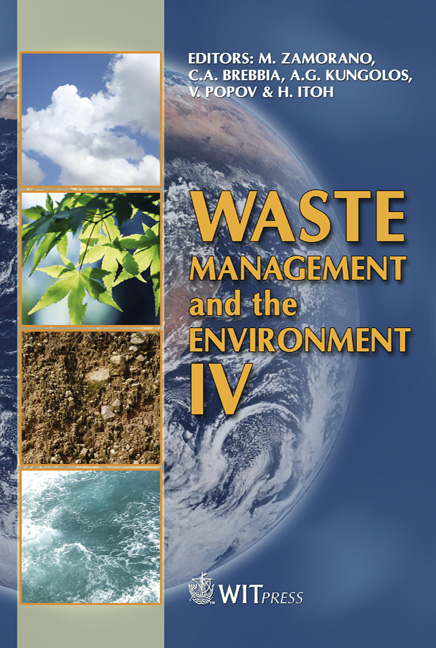An Application Of Anaerobic Baffled Reactor To Produce Biogas From Kitchen Waste
Price
Free (open access)
Transaction
Volume
109
Pages
10
Page Range
655 - 664
Published
2008
Size
359 kb
Paper DOI
10.2495/WM080671
Copyright
WIT Press
Author(s)
A. Malakahmad, N. Ahmad Basri & S. Md. Zain
Abstract
The tremendous increase in solid waste generation is an unavoidable occurrence due to the fast growing urbanisation and industrialisation in Malaysia. Anaerobic digestion of organic wastes is receiving more attention in recent years throughout the world because the biomethanogenesis process decomposes organic matter to produce methane gas, which is an excellent energy source as fuel in combined heat and power units. In this study an application of an Anaerobic Baffled Reactor (ABR) for the production of biogas from kitchen waste was carried out to identify the optimum efficiency of methane gas generation and the potential usage of sludge as organic fertiliser. Different proportions of kitchen waste and activated sewage sludge were mixed and tested in the reactor to achieve the best amount of methane production in the shortest time. Results showed that the combination of 75% of kitchen waste and 25% of activated sewage sludge presented as the best result, which was 74.1% of methane gas. Further, determination for fertiliser value from tests on the sludge in the reactor showed its potential for future use in composting. The amounts of N, P and K were 0.95, 0.80 and 0.45% respectively. According to the observation, anaerobic digestion of kitchen waste in the ABR is able to provide a vital element in an integrated solid waste management and the energy production from this system could be a good reason for many communities to start recycling valuable resources, and hence achieving zero waste production. Keywords: anaerobic baffled reactor, kitchen waste, biogas production.
Keywords
anaerobic baffled reactor, kitchen waste, biogas production.





